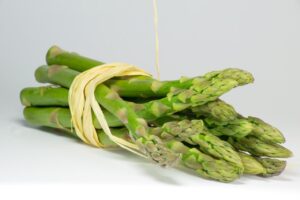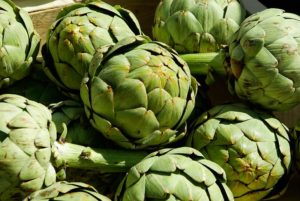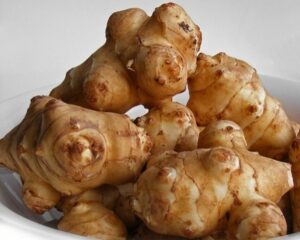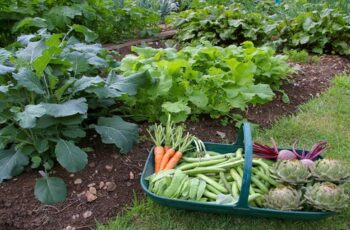Ad Blocker Detected
Our website is made possible by displaying online advertisements to our visitors. Please consider supporting us by disabling your ad blocker.
HOW TO PLANT A PERENNIAL FOOD GARDEN – 20 FRUITS & VEGGIES THAT WILL KEEP COMING BACK YEAR AFTER YEAR
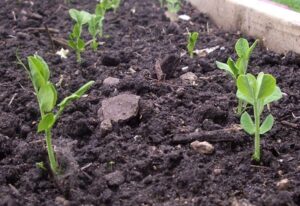
Growing vegetables and fruits in the home garden are rewarding, but many people are put off by the backbreaking work involved at the start of the growing season. Perennial edibles are the key to this issue.
Grow them among your regular veggies so that you will have something to look forward to even if you miss your spring or fall planting.
Once planted and established, they require very little work except topdressing and occasional weeding and pruning.
Perennial plantings need a bit of planning though. Remember the following when you add them to your edible landscape:
1. Select the varieties that are guaranteed to do well in your USDA zone and the microclimate in your garden.
2. Plant them interspersed with your annuals so that your garden is uniformly filled out throughout the year.
3. Prepare the planting spot very well since you will be letting them grow there undisturbed for many years.
4. Leave plenty of space between perennials as they will multiply faster than you think.
5. Plant only a few at a time so that you have better control over them if they turn out to be invasive or fall short of expectations.
Here’s a selection of edibles that will reward you with repeated harvest for several years to come.
1. ASPARAGUS
Asparagus is one true perennial vegetable that will reliably come year after year.
Although it is a seasonal vegetable when grown outside in the garden, the expanding mound can be harvested for over 20 years.
The culinary type Asparagus Officinalis can be grown from seeds, but you’ll have to wait 2-3 years to get spears worth the table. It is better to buy one or two-year-old crowns of hybrid varieties or get divisions from someone having clumps of male plants.
Asparagus is a cool-loving plant hardy to USDA zone 4. There are a few cultivars such as UC 157 and Jersey Knight that can be grown in warmer areas.
Grow this prized vegetable in well-drained slightly alkaline next to where tomatoes are planted since they are mutually beneficial companions.
2. ARTICHOKE
Globe Artichoke Cynara cardunculus is a Mediterranean native thriving in warm climates.
If you live in USDA 7 and above, you can grow this thistle relative as an annual and harvest the edible flower buds from spring to mid-fall.
When grown from seeds, the flower buds are produced in the second year and for 3-4 years afterward.
Alternatively, root cuttings from established plants or ready–to-plant starts you can get from garden centers or online can be used as planting material.
Allow plenty of room in a sunny location for the plant to grow and spread. Regular watering and feeding, especially with a potash fertilizer at the time of bud formation will ensure large flower buds.
Divide the clumps every 3-4 years to promote vigorous growth.
3. JERUSALEM ARTICHOKE
This American native Helianthus tuberosus has a misleading common name. It has nothing to do with Jerusalem and is only distantly related to globe artichoke, although the edible tubers have a similar taste.
Also known by more suitable names such as sun artichoke and sunchoke, this plant is closely related to the garden sunflower was widely used by Native Americans.
The tubers are starch-free and rich in dietary fiber inulin known for its cholesterol-lowering and chemo-protective ability.
Inulin is great for gastrointestinal health as it aids the growth of beneficial bacteria in the guts.
This sun-loving plant is easy to grow almost anywhere and produces large quantities of tubers every year, so plant only a few.
4. TREE ONIONS
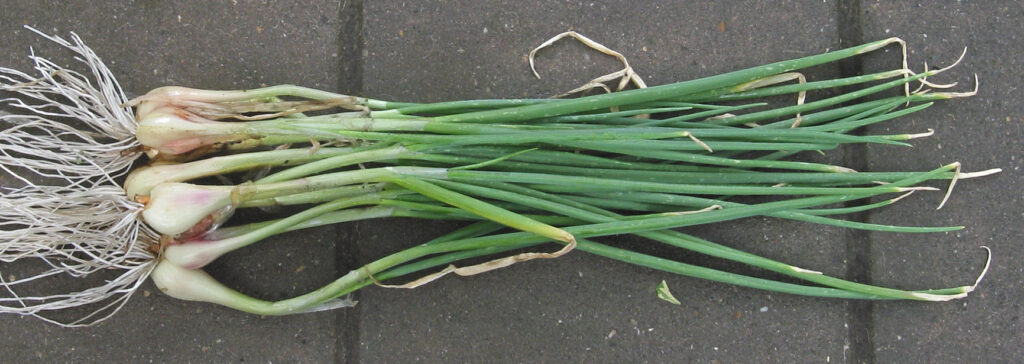
Tree onions (Allium cepa var. proliferum) are a variety of regular onions that develop a bunch of bulbs on the flower stalks.
When these topsets grow bigger, the stalks bend until they touch the ground, starting new plants a little away from the parent plant. This has earned them the common name ‘walking onion.’
These easy-to-grow and easy-to-harvest onions are a great asset to any edible garden.
Not only the top sets, but the leaves and the underground bulbs can be eaten, but the latter is tougher and more pungent than regular onions.
To plant these onions you can either divide a clump or use the topsets. Plant them any time of the year, even in winter if the ground doesn’t freeze.
They are now considered a hybrid of regular onion with perennial Welsh onion.
5. WATERCRESS
If you have some water in your garden, watercress Nasturtium officinale is a great perennial to have.
Grow it from seeds or start with a single clump, and you will soon end up having plenty for your use and for giving away.
When you buy watercress, you get whole clumps with or without roots, but in your garden, you will be harvesting only a few leaves from each clump. They will grow back quickly, ensuring a continuous supply.
The crisp, peppery leaves are great in salads and are the most nutrient-dense food you can grow at home. You can cook them too, but it mellows the taste.
6. RHUBARB
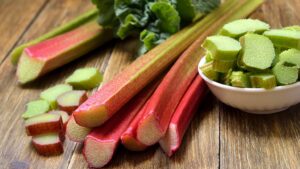
Rhubarb (Rheum rhabarbarum) is one of the first perennials to come up in spring. This is a plant for cooler regions since it cannot withstand heat above 90F.
Well-drained soil amended with rich manure is ideal for growing this vegetable.
Sections of rhubarb roots should be planted in early spring and the soil kept moist. Since the clumps can grow 3-4 feet across, sufficient spacing is essential.
The rhubarb can be harvested from the second year onwards and for the next 2-3 years but may need to be divided after that. These plants are quite tough and take some amount of neglect, but they respond well to good care.
